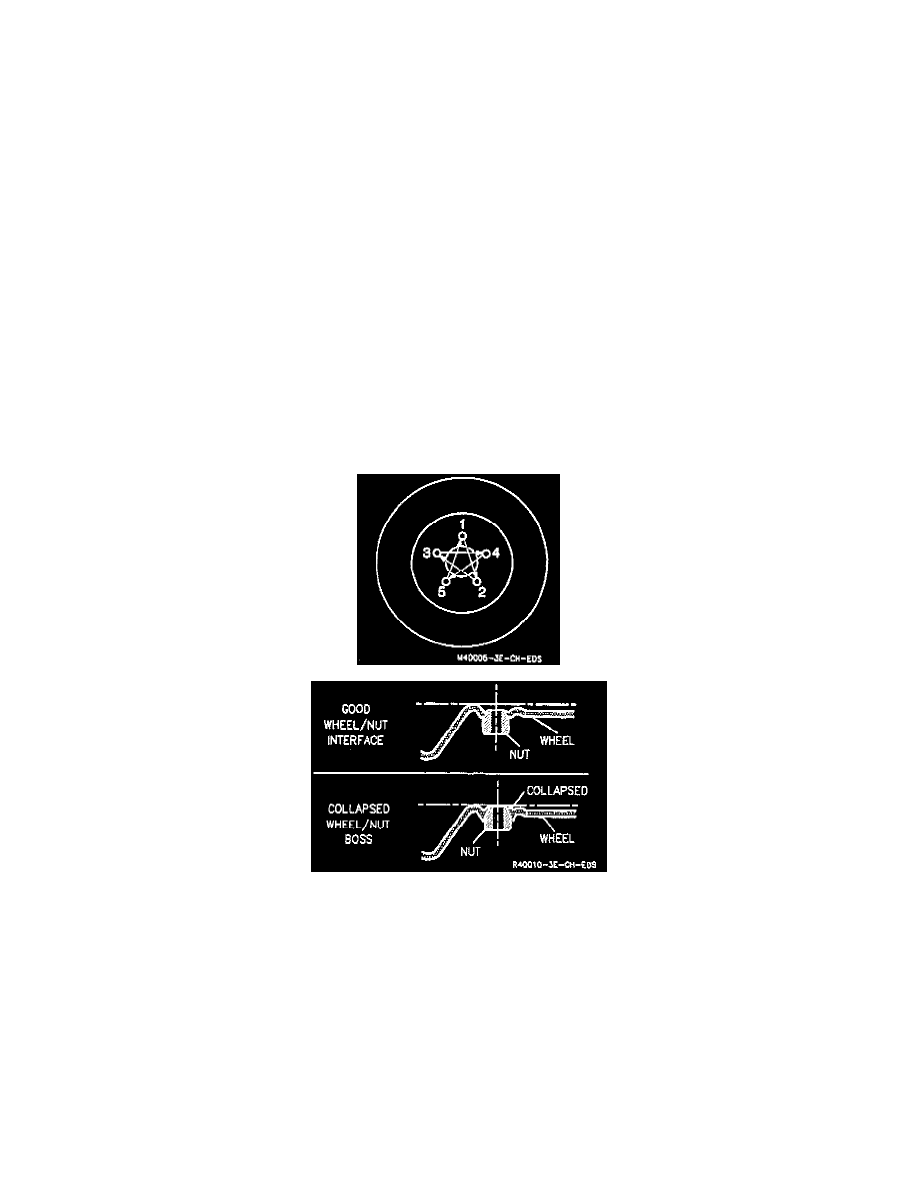LSS V6-3.8L VIN K (1997)

Wheels: Service and Repair
On-Vehicle Service
Wheel Removal
Sometimes, wheels can be difficult to remove due to corrosion or a tight fit between the wheel center pilot hole and the hub or rotor. Wheels can be
removed without damage as follows:
1. Tighten all wheel nuts on the wheel; then loosen each nut only two turns.
2. Lower vehicle onto floor.
3. Rock vehicle from side to side as hard as possible to loosen the wheel, or rock it from "Drive" (D) to "Reverse" (R), allowing the vehicle to move
several feet in each direction. Apply quick, hard jabs on the brake pedal to loosen the wheel.
4. Stop engine and raise vehicle.
5. Remove wheel nuts and wheel. Do not let aluminum wheels stand vertical at any time. Lay the back (unfinished surface) of the wheel on a soft
clean surface. Penetrating oil is not effective in removing tight wheels.
WARNING: If penetrating oil gets on the vertical surfaces between the wheel and the rotor or drum, it could cause the wheel to work
loose as the vehicle is driven, resulting in a loss of control and an injury accident. Never use heat to loosen a tight wheel. It can shorten
the life of the wheel, studs, or hub and bearing assemblies. Wheel nuts must be tightened in sequence and to the proper torque to avoid
bending the wheel or brake rotor or drum.
Excessive force such as hammering the wheel or tire can also cause damage and is not recommended. Slight tapping of the tire side wall, such as with
your hand or rubber mallet, is normally acceptable.
Wheel Installation
^ Tool Required:
-
J 39544 Wheel Nut Torque Limiter
-
Or Equivalent
Before installing a wheel, remove any corrosion on the wheel mounting surface by scraping and wire brushing. Installing wheels without good
metal-to-metal contact at the mounting surfaces can cause wheel nuts to loosen, which can later allow the wheel to come off, possibly causing loss of
control.
Wheel nuts must be tightened in sequence and to proper torque to avoid bending the wheel, brake drum or rotor. Over torquing the wheel nuts on steel
wheels could cause damage to the wheel mounting holes and may also lead to cracks. Never use lubricants or penetrating fluids on wheel studs, nuts, or
mounting surfaces, as this can raise the-actual torque on the nut. Tighten wheel nuts using J 39544. Do not use J 39544 to remove wheel nuts.
